|
Spitfire Mk.IXc Early Version
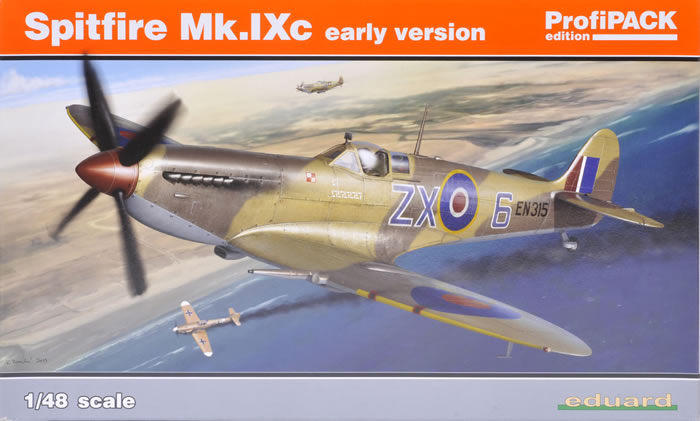
Eduard ProfiPACK, 1/48 scale
S
u m m a r y |
| Catalogue Number: |
Eduard Kit No. 8282 - Spitfire Mk.IXc Early Version ProfiPACK |
| Scale: |
1/48 |
| Contents and Media: |
207 parts in grey coloured plastic; 14 parts in clear; colour photo-etched fret; self-adhesive die-cut masking sheet; markings for five aircraft |
| Price: |
USD$42.46 plus shipping,
available online from Eduard |
| Review Type: |
FirstLook |
| Advantages: |
Accurate fuselage and wing dimensions; very high level of detail; outstanding surface
features including crisply recessed panels and subtle rivet lines where
appropriate; includes colour photo-etched parts; separate parts for closed and open canopy; many options allowing either early or late versions to be built straight from the box - early and late carby intakes, two full sets of wings, kinked/straight elevators, two styles of gear doors, two different upper engine cowlings, clipped or full-length wing tips, three types of wheel hubs (four spoke, five spoke and covered), bombs and pointed/rounded rudder. |
| Disadvantages: |
Flare rack on seat should be omitted. |
| Conclusion: |
Eduard releases the early version Spitfire Mk.IXc as a standalone kit, and it delivers all the fantastic attributes of its late-version predecessor - accurate dimension, impressive detail, and many options allowing either an early or late version to be built straight from the box. Highly Recommended. |
Reviewed by Brett Green

Eduard's 1/48 scale Spitfire Mk.IXc Late Version will be available online from Squadron.com
The Focke-Wulf Fw 190 asserted its authority as soon as it appeared over the Channel Front in September 1941. It was so clearly superior to the Spitfire Mk.V that RAF Fighter Command curtailed operations twice - from November 1941 to March 1942, and again from 13 June 1942 - due to unacceptably high losses against the Luftwaffe's "Butcher Bird".
The Rolls-Royce Merlin 60 series engines would offer the Spitfire the essential edge it needed to balance the scales against this new foe, but the high altitude Spitfire Mk.VII and the unpressurised Mk.VIII were still many months away from production.
An interim proposal was therefore made to provide a suitable solution in a more timely fashion. The Merlin 61 engine would be fitted to the existing Spitfire Mk.V airframe, matching the Fw 190s performance at medium and high altitudes. This aircraft was known as the Spitfire F.Mk.IX, Type No.361.

The resulting Spitfire retained the clean lines of the earlier Mks. I, II and V, but featured a longer and modified fuselage to accommodate the bigger engine, revised intakes, radiators and oil coolers, and a four-bladed propeller to absorb the greater power.
Although initially conceived as a stop-gap measure, the Spitfire Mk.IX and the essentially similar Mk.XVI (powered by a Packard Merlin engine) eventually became the most numerous of all Spitfire variants with more than 7,000 delivered to the RAF, the VVS and other Allied air forces.
The initial production version of the Spitfire Mk.IXc could be distinguished by a small carburettor intake below and behind the nose, elevators with diagonal mass balances and wide blisters on top of the wings covering both cannon bays.
Typical external characteristics of the later Spitfire Mk.IXc included narrow wing blisters over the inboard cannon bay only, new kinked mass balances on the elevators and a wider, longer carburettor intake. Some Mk.IXcs were also fitted with the tall pointed rudder from the Mks.VII and VIII.
The Spitfire Mk.IX continued in front line service until the end of the Second World War and beyond.
The Spitfire Mk.IX in 1/48 scale
The search for the ideal 1/48 scale Spitfire Mk.VIII / IX / XVI has been something akin to the quest for the Holy Grail. Every time modellers get a whiff, that potentially perfect Spitfire rapidly recedes into the mist.
Back in the 1990s, hopes were high for the Ocidental offering, but that kit had some serious dimensional and cross-section problems. The ICM 1/48 scale Spitfire IX was more accurate, but early pressings were plagued with moulding flaws and the fuselage was skinny. Over-engineering also made this kit a challenge to build.
Released in 2001, Hasegawa's 1/48 scale Spitfires were well detailed, but the whole family was blighted with a noticeably short fuselage and related detail issues.
It was Airfix's turn in 2007, but their Mk.IXc suffered from a long list of shortcomings. The wing, rudder and horizontal tailplanes were very thick, and the dropped flaps were an unnecessary gimmick. The shape of the propeller blades was poor, as were the blobby exhausts and the slab-like cannon bulges on top of the wings. Canopy parts were far too thick for this day and age as well.
It seemed that this great aviation icon was cursed.
Eduard, however, came to the rescue in April 2013 with a magnificent kit of the late version Spitfire Mk.IX. This kit had it all - a high level of detail, excellent fit, lots of useful options and it was very accurate.
Eduard followed up with a Royal Edition boxing that included parts for early version Mk.IXc, late version Mk.IXc and Mk.IXe as well as additional resin detail parts, extra photo-etched frets and bonus items.
Eduard has now released the Mk.IXc Early Version as a standalone kit in its ProfiPACK series.
The ProfiPACK series offers an affordable price for one complete kti, and will be welcomed by Spitfire fans everywhere.
Eduard's 1/48 scale Spitfire Mk.IXc Early Version comprises 207 parts in grey coloured plastic, 14 parts in clear, colour photo-etched fret, self-adhesive die-cut masking sheet and markings for five aircraft
The primary difference between this kit and the Late Version release from last year is the inclusion of an insert-free early-style wing.
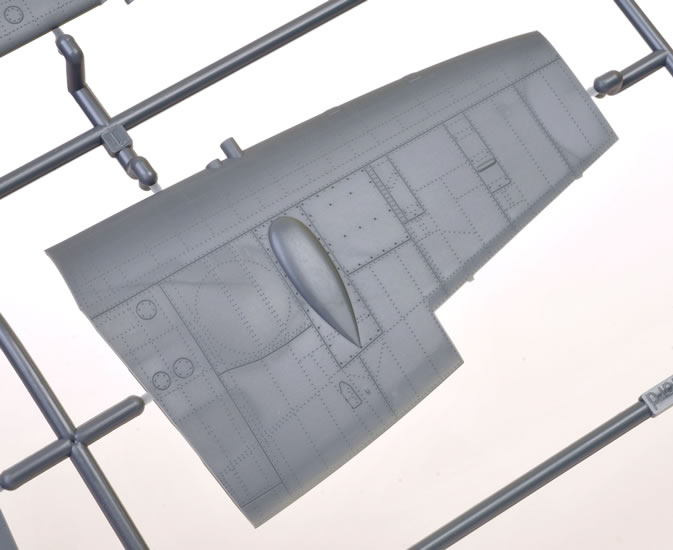
The early wide gun bulges are moulded direct to the top wing halves, and the appropriate shell ejector ports are similarly moulded in place on the bottom of the wings. The mount for the small carburettor intake is well defined at the front and centre of the lower wing half too.
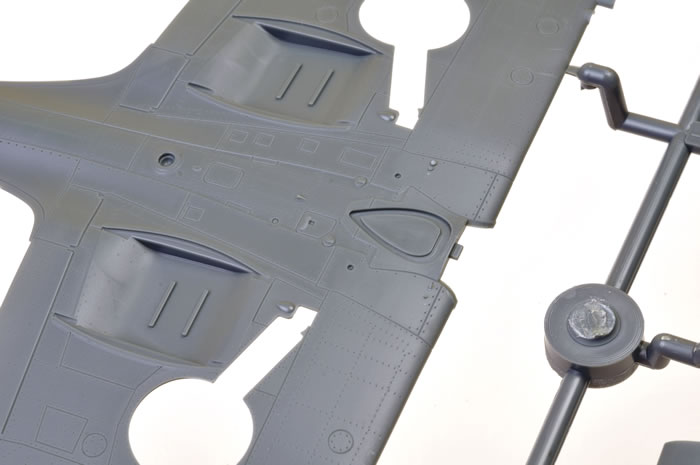
Surpisingly, the wing sprue from the Late Version is also included with this kit, so you'll be able to build either a late or early version straight from the box
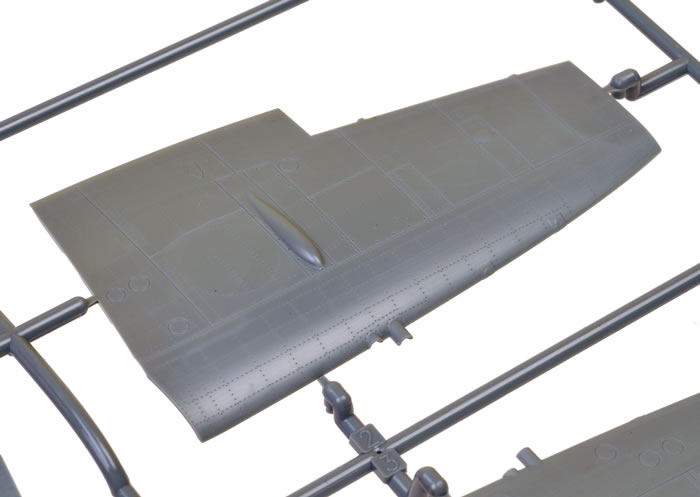
The kit is otherwise the same as the Late Version. For a detailed review of this kit and images of all the parts, just follow this link.
Markings
Markings are supplied for five aircraft:
-
EN315, Flown by S/Ldr. Stanislav Skalski, Polish Combat Team, Northern Africa, Spring 1943
-
EN568, Flown by W/Cdr. Alan C. Deere, CO of Biggin Hill Wing, Biggin Hill Air Base, June, 1943
-
EN133, No. 611 Squadron, Biggin Hill, Early 1943
-
EN354, flown by 1st Lt. Leonard V. Helton, 52nd FG, 4th FS, La Sebala Airfield, Tunisia, June, 1943
-
BS392, Flown by S/Ldr. Bernard Dupérier, CO of No. 340 Squadron, Biggin Hill Airbase, Autumn 1942
Everything is in register on my sample and colours look good.
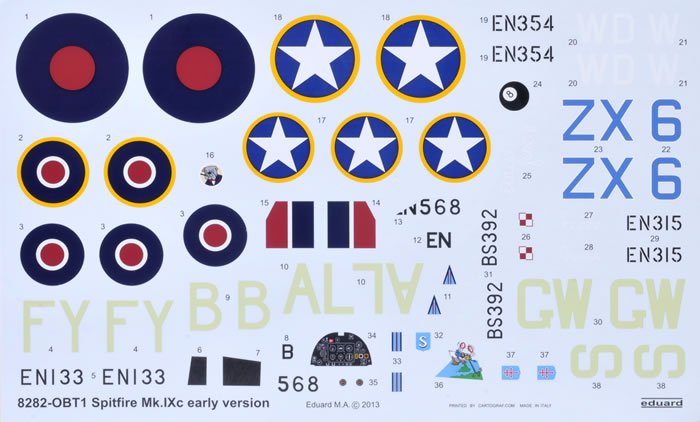
A second decal sheet supplies stencil markings.
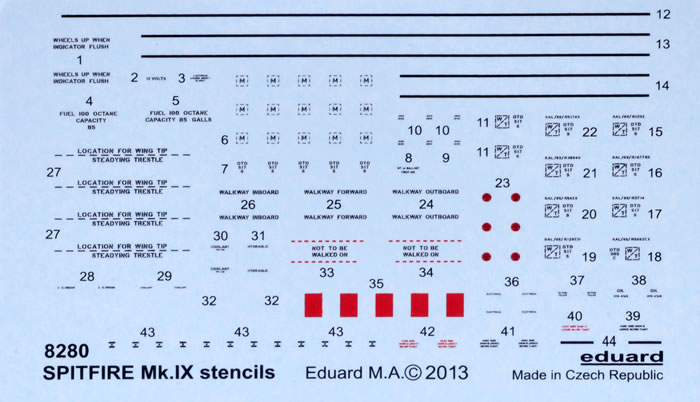
The colours look very bright in my photo but they are not as lurid under normal lighting, although the blue may be a little bit too light.
Eduard has now released the early version Spitfire Mk.IXc as a standalone kit, and it delivers all the fantastic attributes of its late-version predecessor - accurate dimension, impressive detail, and many options allowing either an early or late version to be built straight from the box.
Highly Recommended.
Thanks to Eduard for the sample
Review Text Copyright © 2014 by
Brett Green
Page Created 6 February, 2014
Last updated
7 February, 2014
Back to HyperScale Main Page
Back to Reviews Page |
